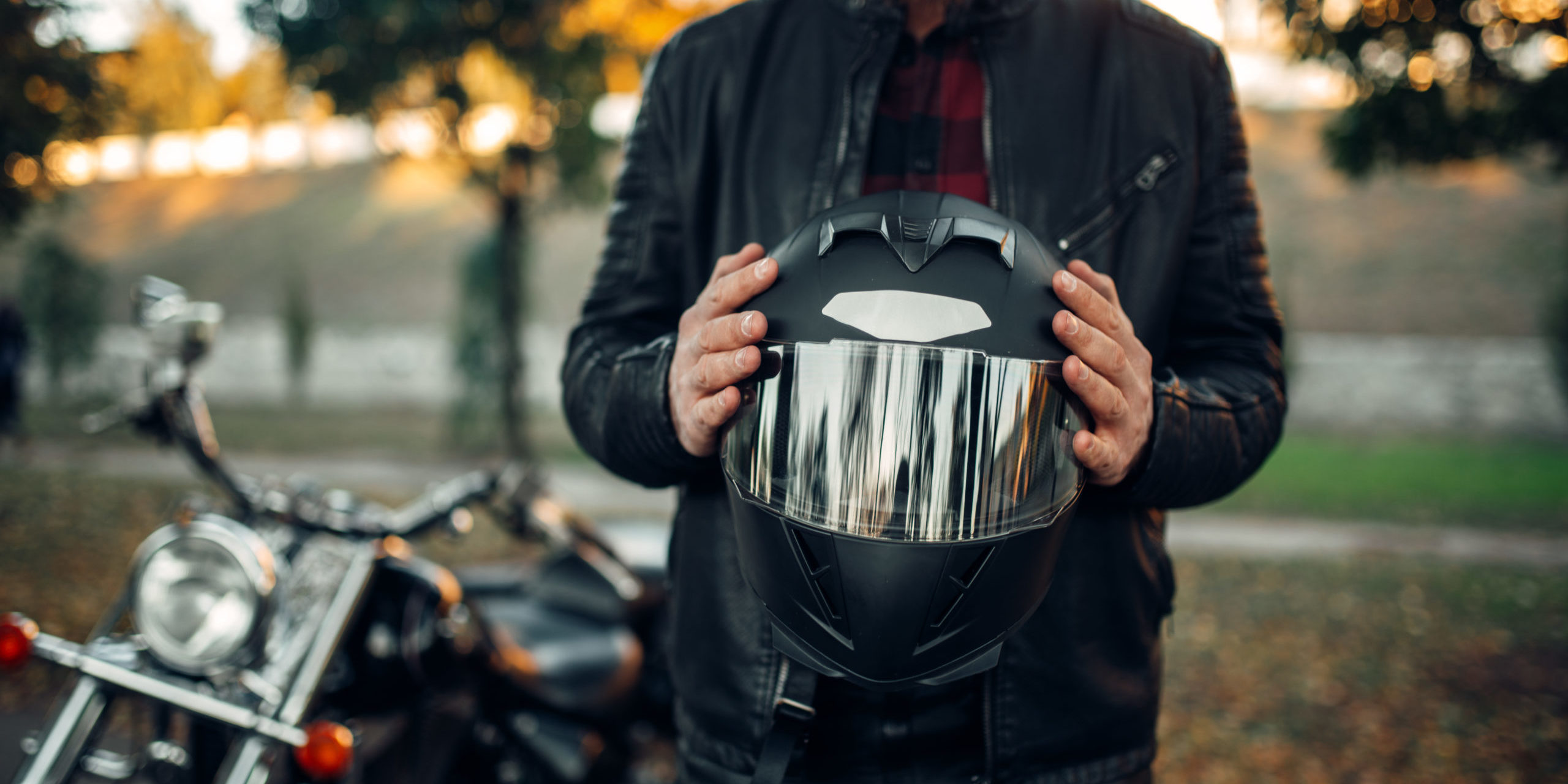
A Rider’s Guide to Caring for Your Motorcycle Helmet
Did you know you should replace your motorcycle helmet if you drop it from even three feet? Or that borrowing a motorcycle helmet is a bad idea – but maybe not for the reasons you think?
Motorcycle helmets are precision safety equipment, and they require precision care. Here are some tips for maintaining your helmet’s maximum protection.
Motorcycle Helmet Types
Motorcycle helmets come in several different types or styles. Each type or style offers benefits and drawbacks. Common styles include:
- Full-face helmets. These helmets incorporate face shields to fully enclose the head and face. They’re often aerodynamic and offer good ventilation and some hearing protection.
- Modular helmets. Have removable face protection. Many adventure sports riders choose these helmets. Their airflow adjustment can help keep dust and debris out of your face.
- Open-face helmets. Also known as three-quarter helmets, cover the head and ears but have no protection for the face. Riders typically need goggles or safety glasses to keep debris out of their eyes on the road. The lack of a chin guard can also increase the risk of injury.
- Half helmets. Cover the head, but leave the ears, the back of the head and neck, and the face exposed. These helmets offer the lowest level of protection.
Helmets have an inner and outer layer. Both layers play a role in offering protection. The outer shell takes the energy of an impact and also prevents objects from penetrating. The inner layer cushions the skull in the event of an impact, working to reduce the severity of a concussion or similar traumatic brain injury. It’s important to check if your helmet is DOT (Department of Transportation) compliant, as these helmets won’t mask important sounds or restrict your vision. You will need to look out for a label with the manufacturer’s name and model, and it says DOT, FMVSS No. 218, CERTIFIED.
When Is It Time to Replace Your Helmet?
Always check your helmet’s manual when you purchase it. Each manufacturer has its own recommendations about replacing a helmet. If the manual doesn’t offer a recommendation, consider contacting the manufacturer.
It’s always wise to replace your motorcycle helmet if:
- It has fallen or been dropped from a height of three feet or more,
- It has been thrown against any hard surface,
- The helmet shows signs of fading, worn padding, or chin strap damage,
- The helmet is five years old or older.
Some riders who ride year-round or use their bikes to commute should change their helmets every two to three years. Since helmet materials break down over time, all helmets should be replaced if they are more than five years old, even if they’ve never been worn.
Damage to the helmet’s lining can occur even if damage to the outer shell isn’t visible. For this reason, it’s important to replace your helmet if it’s been dropped or thrown, even if the shell looks fine. Similarly, replace your helmet if you see wear and tear on the pads or chin strap.
Finally, always replace a helmet that shows signs of fading. Faded paint or padding means the helmet has sat in the sun. Heat exposure damages the lining inside the helmet. Even if you don’t mind the faded look, replace the helmet to ensure the inner lining does its job in the event of a serious crash.
Why Borrowing a Helmet Is a Bad Idea
Many riders pause at the thought of borrowing someone else’s helmet. It might fit badly. The owner might have lice or other head conditions you don’t want.
These are good reasons to avoid borrowing a helmet, but they aren’t the most important reasons. The number-one reason to avoid borrowing a motorcycle helmet is that you don’t know the helmet’s history.
How old is the helmet? Has it been dropped? Was it stored in a boiling hot garage? Has it been involved in an impact before?
Without answers to these questions, you can’t know for sure whether the helmet will protect you in a motorcycle crash. It’s better to purchase a helmet that fits you well and whose history you know.
Helmet Cleaning and Care
Cleaning a motorcycle helmet improperly can also cause damage. Wax, polish, harsh cleaning agents, paints, and adhesives can all weaken the helmet’s materials, increasing the risk that the helmet will fail in a crash.
Most helmet manufacturers recommend cleaning a helmet’s interior and exterior with mild soap and water. Then, let it air dry at room temperature. Never dry a helmet in the hot sun, a microwave or oven, or a hot space like a garage. Don’t use a blow dryer, either. Heating the helmet can weaken it.
Store your helmet at room temperature, away from strong chemicals, children, and pets. Some pets like to chew helmets and liners, especially after they’ve absorbed salt from perspiration.
Even the newest, most well-cared-for helmet cannot eliminate all injury risks but some protection may be better than none. Your helmet is an investment in your safety and making sure that your head is protected in the event of a crash can make the difference between life, death, or a lifetime of disability.
If you’re injured in a motorcycle crash, talk to our experienced South Carolina motorcycle accident attorneys. We offer free consultations and no fee until we secure compensation for you.




















